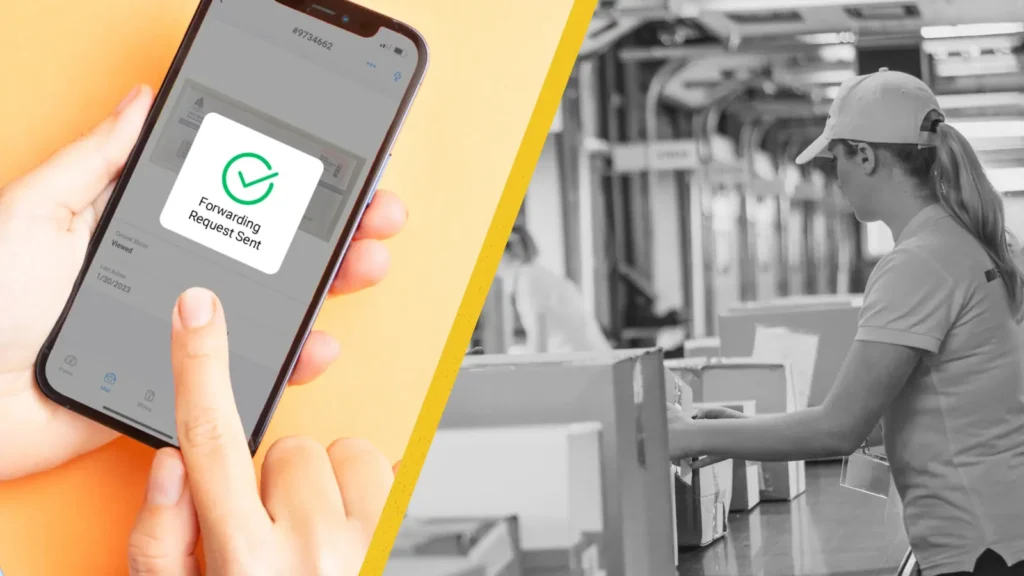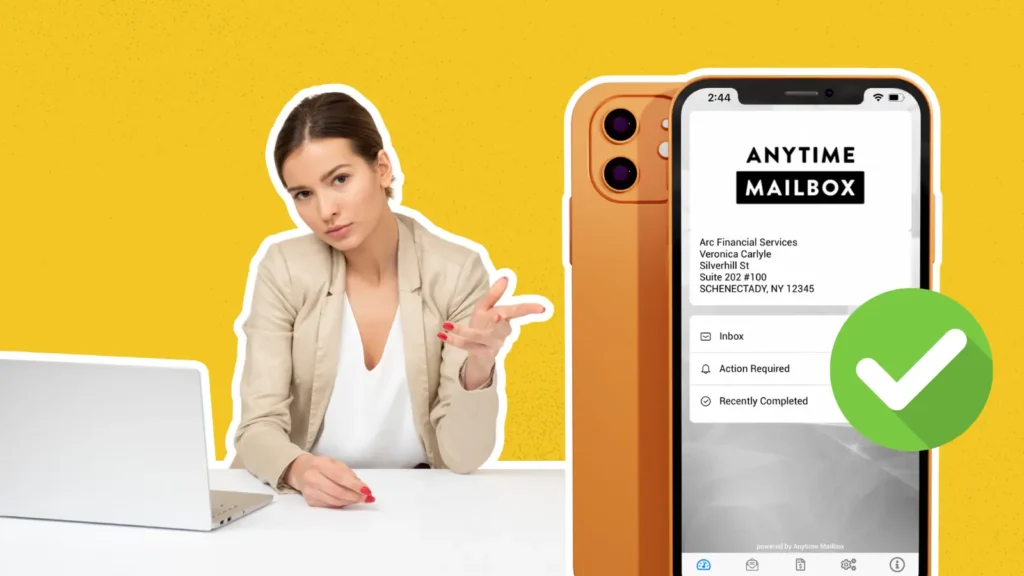Choosing how to manage your mail might not be something you think about often, but it can have an impact on your daily life or business operations. Whether you’re a frequent traveler who needs access to your mail and packages from the road, a business owner juggling paperwork, or just someone handling mail from home, having the correct mailing address is crucial for both mail forwarding and traditional mail handling.
We’re here to save you some research time and to break down the primary differences between mail forwarding and traditional mail handling. We’ll show you who benefits most from each and help you decide which option fits your needs—whether you’re looking for flexibility, security, or simply peace of mind.
Introduction
Mail forwarding is a convenient and efficient way to manage your mail, especially for individuals and businesses that are constantly on the move or have multiple locations. With mail forwarding, you can automatically forward your mail to a new address, saving you time and hassle. In this article, we’ll explore the concept of mail forwarding, its benefits, and the ins and outs of how it works.
What is Mail Forwarding?
Definition of Mail Forwarding
Mail forwarding allows you to redirect your mail from one address to another. It’s particularly beneficial for individuals and businesses that need to receive mail at a different location than where they are, whether temporarily or permanently.
Whether you’re a frequent traveler, a digital nomad, or a business with multiple offices, mail forwarding ensures that you never miss important correspondence. It can be used for both personal and business purposes, providing a flexible solution for managing your mail.
How Mail Forwarding Works

Mail forwarding works by redirecting your mail from your old address to your new address. When you sign up for a mail forwarding service, you provide your old address and your new address, and the service takes care of forwarding your mail. You can choose to forward all of your mail, including packages, or only specific types of mail, such as letters or bills. Some mail forwarding services also offer additional features, such as mail scanning and package forwarding. This means you can view your mail online, decide which items to forward, and even have packages sent to your current location, no matter where you are.
Traditional Mail Handling
Definition of Traditional Mail Handling
Traditional mail handling refers to the process of receiving and managing mail at a physical address. This can include sorting, opening, and responding to mail, as well as storing and disposing of junk mail. Old school traditional mail handling can be time-consuming and labor-intensive, especially for businesses that receive a high volume of mail.
In contrast, mail forwarding services offer a more efficient and convenient way to manage your mail. With mail forwarding, you can automatically forward your mail to a new address, saving you time and hassle.
Additionally, many mail forwarding services offer helpful features, such as mail scanning and package forwarding, that can help you manage your mail more efficiently. This means less time spent dealing with physical mail and more time focusing on what matters most to you or your business.
What are the Key Differences Between Mail Forwarding and Traditional Mail Handling?

Flexibility
One of the biggest advantages of mail forwarding is the flexibility it offers. With traditional mail handling, you’re tied to a single address, requiring your physical presence to collect letters, packages, or important documents. This can be inconvenient if you’re traveling, relocating, or working remotely.
A virtual address can provide needed flexibility by offering a physical location for receiving mail and packages, which can then be forwarded electronically or physically, allowing for efficient management of correspondence from anywhere in the world.
Mail forwarding services allow you to access your mail from anywhere, anytime. Your mail is scanned and uploaded to a secure online portal, making it easy for you to view, manage, and forward items to your current location. Whether you’re across the country or on the other side of the world, mail forwarding ensures you never miss important correspondence, which is especially useful for digital nomads, business travelers, or anyone who needs flexibility in handling their mail.
Security and Privacy
Security and privacy are major concerns when it comes to handling mail, especially with the rapidly growing threat of identity theft (555,000 reported cases only at the start of 2024!) and mail fraud. Traditional mail handling doesn’t offer much in terms of protection—mail sits in your mailbox until you retrieve it, making it vulnerable to theft, loss, or unauthorized access.
Mail forwarding services, on the other hand, often come with enhanced security measures. These services securely handle incoming mail, ensuring that your sensitive information is protected from prying eyes.
Your mail is stored in secure facilities, and many services offer encrypted digital access. You can choose to shred or discard unwanted mail with a click, ensuring that confidential documents don’t end up in the wrong hands. Additionally, mail forwarding services often include tracking for packages and advanced authentication for accessing your online account, giving you greater control over your privacy and peace of mind that your mail is handled safely.
Costs to Consider
When deciding between mail forwarding services and traditional mail handling, understanding the cost differences is important. Traditional mail handling typically involves minimal expenses—mainly the cost of a PO Box or physical mailbox, plus standard shipping or postage fees. However, using a postal service for traditional mail handling most often incurs additional costs, such as fees for lost packages, not to mention frequent challenges when it comes to customer support.
Mail forwarding services usually charge a monthly or annual fee, which covers the cost of receiving, scanning, and storing your mail. Additional fees may apply for mail forwarding, package shipping, or specific services like shredding or storage beyond a certain period.
While it may seem like an extra expense, mail forwarding offers significant value, especially for those who need to access mail remotely or want enhanced security. By considering your needs and budget, you can choose the option that makes the most financial sense for your situation.
Who Benefits Most From Mail Forwarding?

Mail forwarding can make a tremendous difference for people who need flexibility and convenience in handling their mail. And a virtual mailbox service can benefit frequent travelers, remote workers, and others by providing flexible and secure mail handling. Mail forwarding is especially useful for:
Frequent Travelers
Whether you’re on vacation or constantly on the move, mail forwarding ensures seamless mail delivery, keeping you connected to important correspondence. Instead of missing letters or waiting until you return home, you can access your mail online from anywhere, keeping track of bills, legal documents, or personal notes in real-time.
Remote Workers and Digital Nomads
With over 16% of U.S. companies now completely remote, the popularity of working from anywhere continues to increase. If you work remotely, mail forwarding allows you to manage your mail conveniently while you roam.
A virtual mailbox service also provides a physical street address, which is beneficial for remote workers and digital nomads as it offers a legitimate location for mail delivery.
Digital nomads, in particular, benefit from this service by avoiding the hassle of coordinating with friends or family to check their mail, and it saves them the worry of missing out on packages or important documents while they’re traveling.
Unique Business Models
For businesses that operate remotely or have a dispersed team, mail forwarding can centralize mail handling. Rather than maintaining a traditional office for receiving mail, businesses can use mail forwarding to receive, scan, and distribute important documents no matter where team members are. This not only streamlines operations, but also ensures that critical paperwork never falls through the cracks.
When Do Traditional Mail Services Make Sense?
Traditional mail handling still remains a practical option for individuals and businesses with a stable location and minimal mail management needs. Traditional mail handling is historic, straightforward, reliable, and cost-effective for those who don’t require too much flexibility.
Also, be sure to note that traditional mail services often involve visiting the post office for various mail-related tasks, such as changing mailing addresses and handling mail forwarding requests.
For those who rarely travel and spend much of their time at a fixed address, traditional mail handling sometimes works. Customers can simply collect their mail from their home mailbox or a PO Box without worrying about missing important items.
- For example, a retiree or a person working from home who receives few letters or packages each month may not need the extra features of mail forwarding.
On top of that, local businesses that operate from a brick-and-mortar location can also benefit from traditional mail services.
A retail store, restaurant, or service-based business that doesn’t deal with high volumes of mail may find traditional mail handling more than sufficient. They receive local utility bills, occasional invoices, or correspondence, and all their mail comes directly to their place of business.
And, traditional mail handling sometimes makes sense for those with low privacy concerns and less need for advanced security measures. If the risk of sensitive information being stolen or tampered with is low, the simplicity of receiving mail directly is a good fit.
How to Make the Right Choice Based on Your Needs

If flexibility is your top priority, mail forwarding is ideal. For example, a frequent traveler or remote worker who’s often on the move will benefit from being able to access their mail from anywhere. With mail forwarding, you can receive, scan, and forward your mail regardless of your location, hence avoiding the hassle of waiting for important packages or letters.
For businesses requiring fast service and speedy protocols, mail forwarding can also be a great fit. A company that operates remotely or deals with clients across multiple locations may need quick access to contracts, invoices, or other important documents. Mail forwarding ensures everything is available digitally, streamlining the process and eliminating delays.
Privacy concerns might also impact your choice. If security is a priority, whether you’re receiving sensitive legal documents or personal information, mail forwarding services often provide extra layers of protection through encrypted digital access and secure mail storage.
The Bottom Line
At the end of the day, the way you handle your mail can make life a lot easier. But if you’re not careful, it can also make life and business unnecessarily complicated.
If you need maximum flexibility, privacy, and digital access on the go, virtual mailbox services and mail forwarding are smart choices. But if you’re settled in one place with minimal mail to manage, traditional mail handling might be all you need.
To make the best choices, t’s all about understanding your specific needs. Whether you value convenience, security, or simplicity, choosing the right option can save you time, hassle, and even money.
So. What’s the best fit for you?



